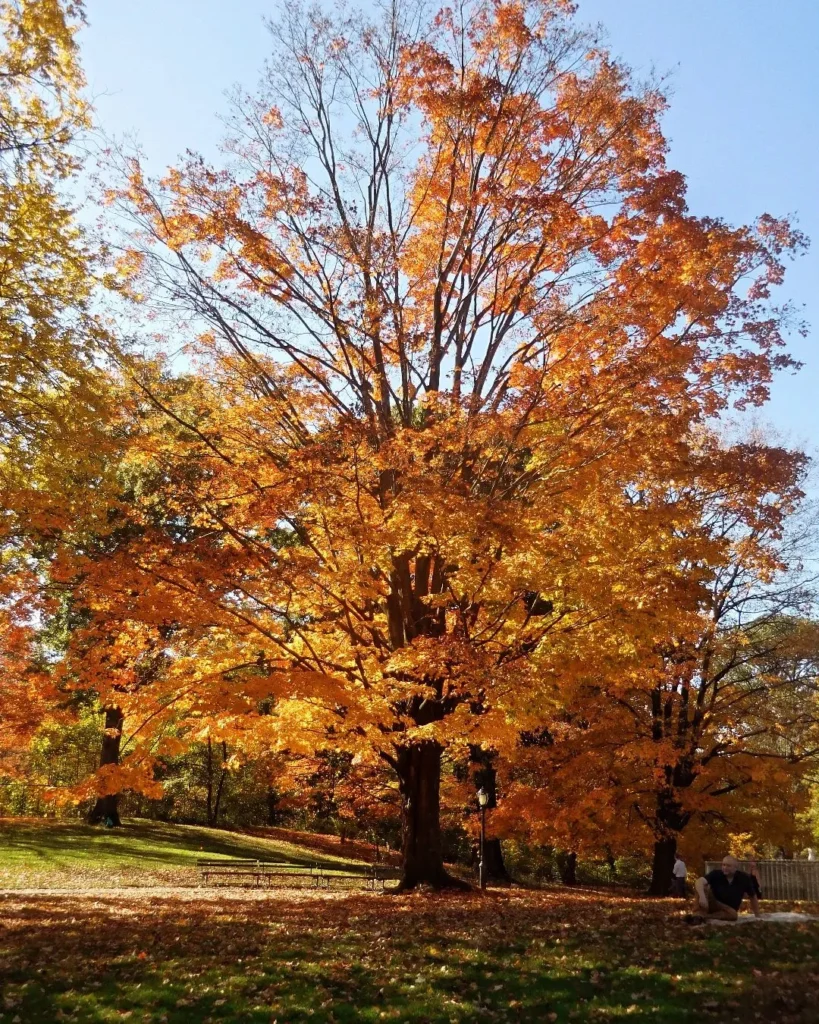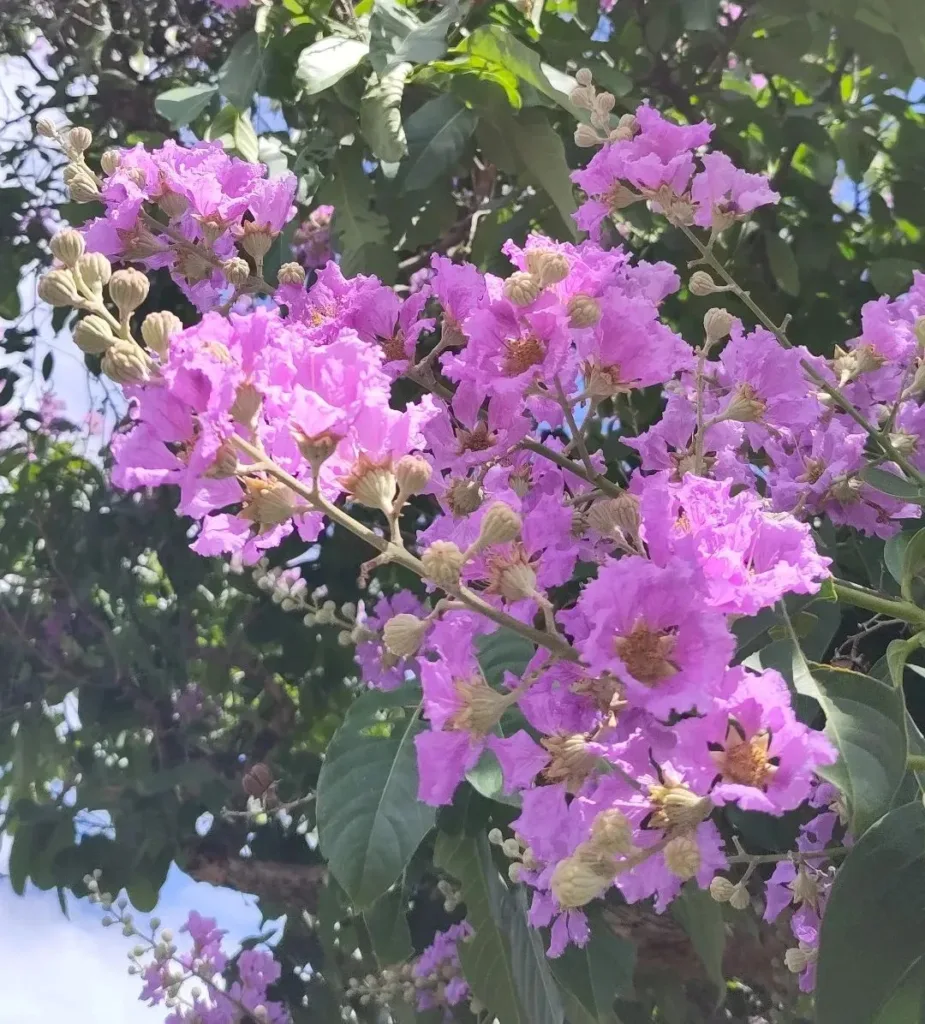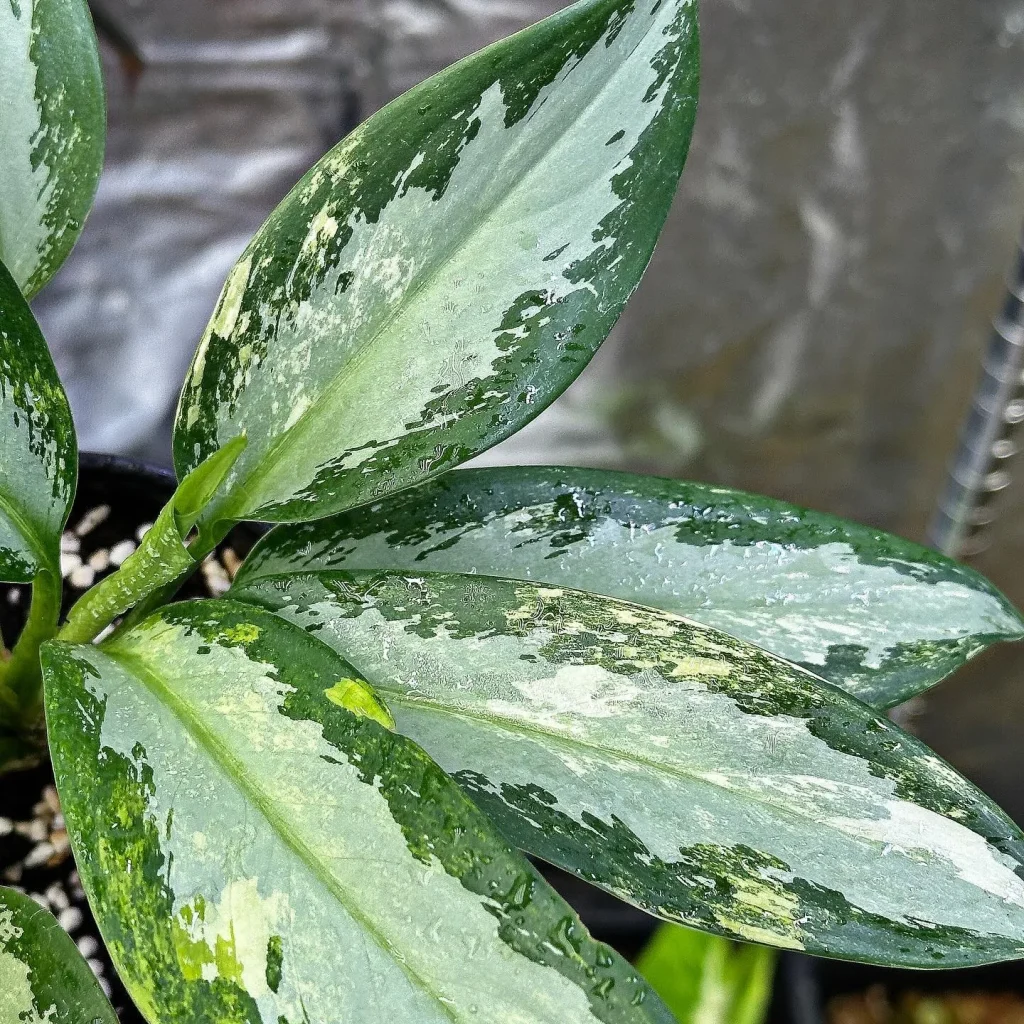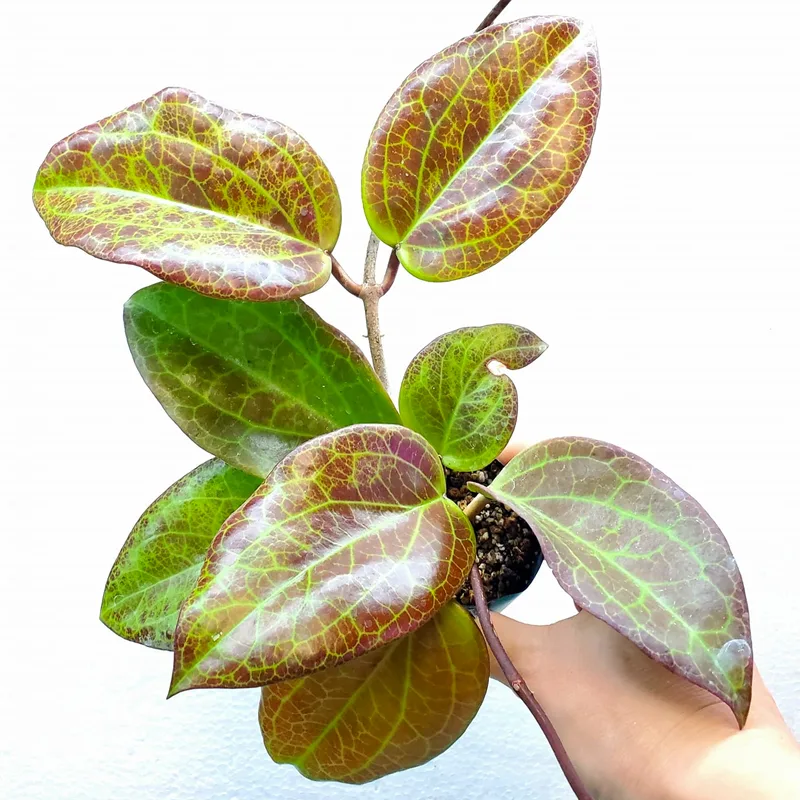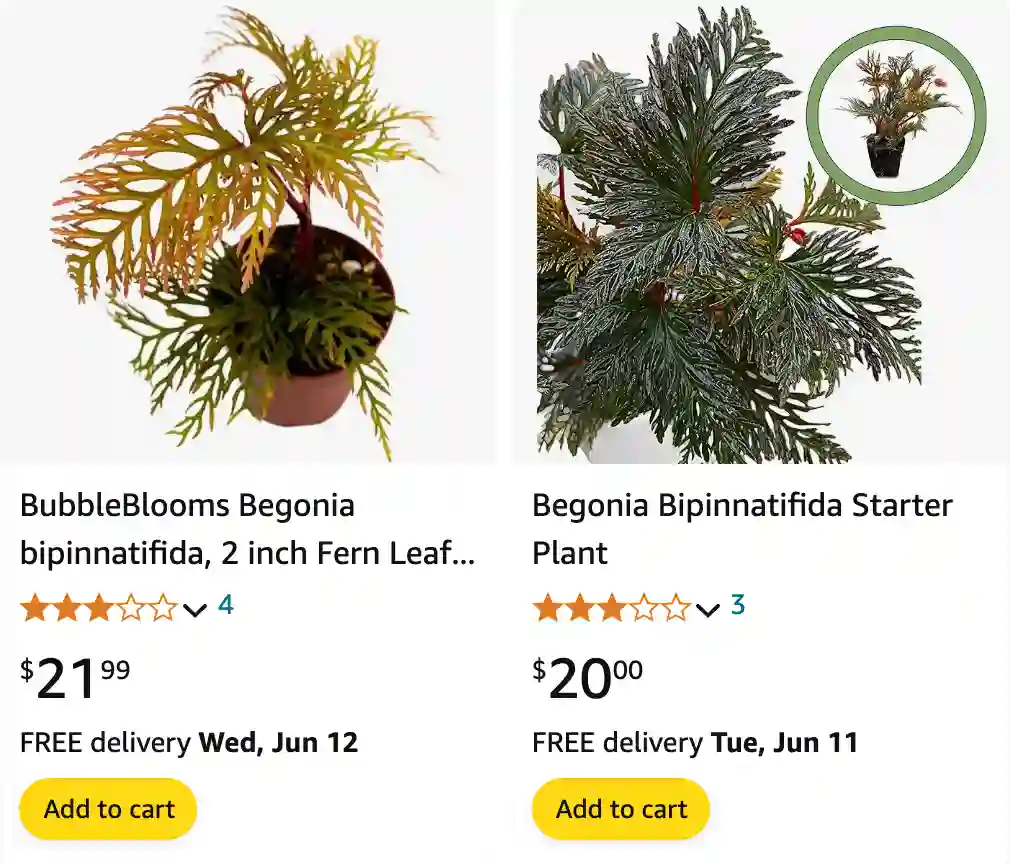
In the vast and wondrous world of houseplants, few can captivate with such intricate elegance as Begonia bipinnatifida. This rare and exquisite species, often affectionately called the “Fern-Leaf Begonia,” stands apart with its deeply divided, almost ethereal foliage that mimics the delicate fronds of a fern. Far from the more commonly seen cane or Rex begonias, Begonia bipinnatifida offers a unique textural and visual experience, drawing enthusiasts into its lush, verdant charm.
This comprehensive guide delves into everything you need to know about cultivating this botanical marvel, from its natural origins to advanced care techniques. We’ll explore its distinctive features, essential environmental needs, propagation methods, and how to troubleshoot common issues. Beyond the scientific facts, join me on a personal “time-lapse” journey, as I recount the unfolding story of nurturing my own Begonia bipinnatifida from a tiny sprout to a flourishing, mature specimen.
Unveiling the Enigmatic Begonia Bipinnatifida
Native to the mountainous, humid tropical rainforests of New Guinea, Begonia bipinnatifida thrives in conditions that mimic its wild habitat – warm, moist, and shaded by a dense canopy. Its name, “bipinnatifida,” is derived from Latin, aptly describing its twice-pinnately divided leaves, which give it that unmistakable fern-like appearance. This is a crucial distinction that sets it apart from many other Begonia species.
Distinctive Features:
- Foliage: The hallmark of Begonia bipinnatifida is undeniably its foliage. Each leaf is a miniature masterpiece, deeply dissected into numerous slender lobes, creating a finely textured, almost feathery effect. The upper surface typically boasts a deep, lustrous green, often with hints of bronze, while the underside reveals a striking contrast with a rich crimson or maroon hue. This combination of intricate division and dual coloration makes it a standout. Unlike the broad, often painted leaves of Rex Begonias or the sturdy, patterned leaves of cane Begonias, B. bipinnatifida‘s delicate architecture is its main appeal.
- Growth Habit: This species typically exhibits a compact, shrub-like growth habit, generally reaching heights of 10 to 12 inches (25-30 cm) indoors, though some well-established plants can grow larger, up to 2 feet (60 cm). Its stems are fleshy, contributing to its overall bushy and dense appearance.
- Flowers: While primarily grown for its exquisite foliage, Begonia bipinnatifida does produce delicate flowers. These are usually small, light pink, often with a subtle yellow center, appearing in clusters along the stems. They tend to bloom occasionally, typically in spring or summer, adding a gentle touch of color without detracting from the architectural beauty of the leaves.
Begonia Bipinnatifida vs. Other Begonia Species:
Many plant enthusiasts are familiar with the vibrant flowers of tuberous begonias, the striking patterns of Rex begonias, or the upright growth of cane begonias like the popular ‘Angel Wing’. Begonia bipinnatifida offers a refreshing departure:
- Foliage Focus: While many begonias are prized for their showy blooms (e.g., wax begonias, tuberous begonias) or bold leaf patterns (e.g., Rex begonias), B. bipinnatifida captivates with the sheer structural elegance and fine texture of its foliage. It’s a plant for those who appreciate botanical artistry over floral spectacle.
- Unique Leaf Structure: Its “bipinnatifid” (twice-divided) leaf structure is relatively uncommon among cultivated begonias, giving it a distinctive, airy, and almost prehistoric feel compared to the simpler leaf forms of most other species.
- Environmental Demands: Compared to some hardier begonia types, B. bipinnatifida is considered more demanding in terms of humidity and consistency of care, making it a rewarding challenge for intermediate to advanced plant parents. It thrives in high-humidity environments, making it a perfect candidate for terrariums or humid plant cabinets, unlike many common houseplants that tolerate drier indoor air.
Time-Lapse Entry 1: The Promise of Green (Months 0-3)
“It all started with a small, unassuming package. Inside, nestled amongst sphagnum moss, was a tiny, rooted cutting of Begonia bipinnatifida. Its leaves, though miniature, already showed the faint promise of that incredible fern-like structure. I had heard tales of its beauty but also its ‘pickiness,’ so I approached this new venture with a mix of excitement and apprehension.
My first task was to create the perfect home. Knowing its tropical origins, I decided on a medium-sized glass terrarium, one that could maintain the high humidity it craved. I prepared a special soil mix: a blend of high-quality orchid bark, perlite, sphagnum moss, and a touch of coco coir, ensuring excellent drainage and aeration. Gently, I potted the little cutting, making sure its delicate roots were not disturbed.
For the first few weeks, the terrarium became my focal point. I placed it in an east-facing window, ensuring bright, indirect light throughout the day, shielding it from any harsh direct sun that might appear. I used a small hygrometer to constantly monitor the humidity, aiming for a consistent 75-85%. Watering was done meticulously, a little at a time, just enough to keep the specialized substrate lightly moist, but never soggy. I always used distilled water at room temperature, hoping to avoid any shock to its sensitive roots.
Progress was slow but steady. After about a month, I noticed the first tiny unfurling of a new leaf. It was a moment of pure joy! The miniature frond, almost translucent at first, gradually hardened and darkened, taking on that signature deep green with a hint of red on its underside. It was a tiny victory, confirming that my efforts were paying off and that this little fern-leafed marvel was indeed beginning its incredible journey.”
Mastering Cultivation: The Art of Begonia Bipinnatifida Care
Cultivating a thriving Begonia bipinnatifida requires attention to detail, but the rewards are well worth the effort. Understanding and replicating its native environmental conditions are paramount.
Light Requirements
- Bright, Indirect Light is Essential: Mimicking its rainforest understory habitat, Begonia bipinnatifida thrives in bright, indirect light. An east-facing window is often ideal, providing gentle morning sun without the intensity of midday or afternoon rays. A few hours of very weak, filtered direct sunlight (e.g., through a sheer curtain) might be tolerated, but direct, harsh sunlight will quickly scorch its delicate leaves, leading to irreversible damage.
- Avoid Low Light: While it appreciates shade in its natural environment, indoor “shade” can often be too dark. Insufficient light can lead to leggy growth, smaller leaves, faded coloration, and increased susceptibility to root rot due to prolonged wet soil conditions.
- Adjust Seasonally: In winter, when light levels are naturally lower, you might need to move the plant closer to a window or supplement with a grow light to maintain its vigor.
Watering Wisdom
- Consistent Moisture, Not Soggy: The key to watering Begonia bipinnatifida is to keep its specialized potting mix consistently moist, but never waterlogged. It’s crucial to allow the top inch or two of the soil to dry out slightly before watering again. Sticking your finger into the soil is the best way to gauge moisture levels.
- Avoid Wet Leaves: This is a critical point for Begonia bipinnatifida. While it loves high humidity, water sitting on its leaves can quickly lead to fungal issues like powdery mildew or botrytis. Therefore, misting is generally not recommended.
- Bottom Watering: A great technique is bottom watering. Place the potted plant in a tray of room-temperature water for 15-30 minutes, allowing the soil to wick up moisture from the drainage holes. Remove the plant once the top of the soil feels slightly damp, and allow any excess water to drain completely.
- Water Quality: Using filtered or distilled water, or rainwater, is preferable, as Begonias can be sensitive to chemicals like chlorine and fluoride found in tap water. Always use water at room temperature to avoid shocking the plant.
Humidity is Key
- High Humidity is Non-Negotiable: Hailing from consistently humid rainforests, Begonia bipinnatifida demands high humidity, ideally above 65%, and thrives in environments with 70-100% humidity. This is perhaps the most crucial factor for its success indoors.
- Terrariums and Plant Cabinets: For most home environments, achieving and maintaining such high humidity levels consistently requires a dedicated setup. A closed terrarium, a cloche, or a humid plant cabinet (like a converted IKEA greenhouse) is often the most effective solution.
- Humidifiers: Placing a humidifier near your plant can significantly boost ambient humidity.
- Pebble Trays: While less effective than enclosed spaces or humidifiers, a pebble tray filled with water beneath the pot (ensuring the pot doesn’t sit directly in the water) can provide a localized humidity boost.
Temperature Harmony
- Ideal Range: Begonia bipinnatifida prefers warm temperatures, ideally between 60-75°F (16-24°C). It can tolerate temperatures up to 95°F (35°C) and as low as 50°F (10°C), but consistent conditions within its preferred range will promote the best growth.
- Avoid Fluctuations and Drafts: Sudden temperature drops or cold drafts from windows, doors, or air conditioning vents can stress the plant and lead to leaf drop or stunted growth. Keep it away from such areas.
Soil & Potting
- Well-Draining and Aerated Mix: A crucial aspect of preventing root rot is using a highly well-draining, airy potting mix that also retains some moisture. A good mix typically includes:
- Orchid bark/pine bark: For excellent aeration and drainage.
- Perlite: To further improve drainage and prevent compaction.
- Sphagnum moss/Coco coir: To retain adequate moisture without becoming soggy.
- High-quality potting soil (lightly): As a base, rich in organic matter.
- Repotting: Repot your Begonia bipinnatifida every 1-2 years, or when you notice it becoming root-bound (roots circling the pot, water draining too quickly, slowed growth). Choose a pot that is only one size larger than its current one to avoid overpotting, which can lead to excess moisture retention and root issues. The best time to repot is during spring or early summer, at the beginning of its active growing season.
Feeding for Flourish
- Balanced Fertilizer During Growing Season: During its active growing season (spring and summer), feed your Begonia bipinnatifida with a diluted, balanced liquid fertilizer (e.g., 10-10-10 or a houseplant-specific blend) every 2-4 weeks.
- Dilution is Key: Always dilute the fertilizer to half or quarter strength to prevent nutrient burn, as Begonias can be sensitive to over-fertilization.
- Reduce or Stop in Winter: As growth naturally slows down in fall and winter, reduce or cease fertilization entirely.
Time-Lapse Entry 2: Steadfast Growth (Months 3-12)
“As spring turned into summer, my Begonia bipinnatifida began to truly unfurl. The initial single stem branched out, and soon, what was once a small cutting started resembling a miniature, vibrant green bush. Each new leaf was a testament to its resilience, growing larger and more pronounced in its bipinnatifid structure. The crimson undersides became more vivid, especially when sunlight filtered through the terrarium just right, making the plant glow with an inner fire.
I learned to ‘read’ the plant. If the leaves started looking slightly dull or crispy at the edges, it was a subtle cry for more humidity. If the substrate felt dry too quickly, I knew it needed a bit more water. I became an expert at gently lifting the plant to feel the weight of its pot – a light pot meant it was time for a drink.
Around the six-month mark, I noticed the plant was starting to outgrow its initial small terrarium. Its leaves were brushing against the glass, and the airflow, even with passive vents, felt a bit constricted. It was time for an upgrade. I carefully moved it into a larger, custom-built plant cabinet, complete with an automated humidifier and small fans to ensure optimal air circulation. This upgrade proved to be a game-changer. The growth accelerated, and the foliage became even more lush.
There were minor setbacks, of course. A few lower leaves yellowed and dropped, likely due to my initial over-enthusiasm with watering, or perhaps a slight temperature fluctuation. But each challenge was a learning opportunity, reinforcing the importance of consistency and observation. By the end of its first year, my Begonia bipinnatifida was a stunning centerpiece, its fern-like leaves creating a dense, verdant canopy within its humid sanctuary.”
Expanding Your Collection: Propagating Begonia Bipinnatifida
Propagation is a rewarding aspect of plant care, allowing you to multiply your beloved Begonia bipinnatifida and share its beauty. While various methods exist for begonias, stem cuttings and division are the most reliable for this particular species.
Stem Cuttings (Most Reliable Method)
This is generally the most successful and straightforward method for propagating Begonia bipinnatifida.
- Select a Healthy Stem: Choose a healthy, actively growing stem that is 4-6 inches long. It should have at least two nodes (the points where leaves or branches emerge). Avoid overly woody or too soft new growth.
- Make a Clean Cut: Using a sharp, sterilized knife or pruning shears, make a clean cut just below a node. Remove any leaves from the bottom 1-2 inches of the cutting to expose the nodes.
- Optional Rooting Hormone: Dipping the cut end in a rooting hormone powder or gel can encourage faster root development, though it’s often not strictly necessary with ideal conditions.
- Prepare the Potting Medium: Plant the cutting in a small pot (e.g., 2-4 inches) filled with a well-draining, airy propagation mix. A blend of perlite and sphagnum moss or fine orchid bark is excellent. Ensure the medium is pre-moistened.
- Plant the Cutting: Insert the cut end of the stem into the prepared medium, ensuring at least one node is buried. Gently firm the medium around the cutting.
- Create a Humid Environment: This is crucial for rooting. Place the potted cutting inside a clear plastic bag, a propagator dome, or back into a terrarium. This creates a miniature greenhouse effect, retaining high humidity.
- Provide Warmth and Indirect Light: Place the covered cutting in a warm spot with bright, indirect light. Bottom heat (from a heat mat) can significantly accelerate rooting.
- Patience and Monitoring: Roots typically form within 4-8 weeks. You’ll know it’s rooted when you see new leaf growth. Once established, you can gradually acclimate it to slightly lower humidity before treating it as a mature plant.
Leaf Cuttings
While less common for B. bipinnatifida compared to other Begonia types, it is sometimes possible to propagate from leaf cuttings. This method involves cutting a mature leaf into sections (ensuring each section has a major vein) and placing them on a moist propagating medium in a high-humidity environment. Plantlets will eventually emerge from the veins. Some sources even suggest crumbling brittle leaves onto sphagnum.
Division
If your Begonia bipinnatifida has developed a sizable root ball or rhizomatous growth, division is a quick way to create new plants.
- Carefully Remove from Pot: Gently remove the plant from its pot.
- Separate Sections: Carefully examine the root ball and rhizomes. Use clean hands or a sterilized knife to gently tease apart or cut sections, ensuring each division has a healthy portion of roots and at least one stem or growth point.
- Repot: Plant each new division into its own pot with fresh, well-draining potting mix.
- Initial Care: Keep the newly repotted divisions consistently moist and in a high-humidity environment until they show signs of new growth, indicating they’ve established themselves.
Seed Germination and Tissue Culture
- Seed Germination: For home growers, propagating Begonia bipinnatifida from seed is generally not recommended due to low viability and inconsistent germination rates. It’s often difficult to source viable seeds, and specialized conditions are required.
- Tissue Culture: This advanced laboratory technique allows for rapid, large-scale, and disease-free propagation but requires specialized equipment and expertise, making it inaccessible for the average hobbyist.
Time-Lapse Entry 3: Unveiling New Horizons (Months 12-24)
“The second year brought continued robust growth. My Begonia bipinnatifida had filled out its larger plant cabinet, its intricate leaves creating a dense, jungle-like tableau. It was a sight to behold – every new frond emerging with that beautiful light green, gradually deepening in color as it matured.
It was around the 18-month mark that I noticed something new. Tucked away amongst the dense foliage, tiny pink buds began to form. I had read that Begonia bipinnatifida flowered, but I hadn’t truly expected it, given its reputation as a foliage-focused plant. The buds slowly swelled, and then, one morning, a delicate light pink flower, no bigger than my thumbnail, opened. Then another, and another, forming small clusters. They were simple, elegant, and perfectly complemented the complexity of the leaves. It was a subtle floral revelation, a gentle nod to its botanical lineage.
I also experimented with propagation during this period. I took a few stem cuttings from a particularly vigorous branch, following all the steps I had learned: clean cuts, rooting hormone, and back into a small, humid propagation box. To my delight, they rooted successfully within a few weeks, and soon I had two more miniature Begonia bipinnatifida plants, ready to embark on their own journeys. It felt incredibly rewarding to not just grow, but to multiply this special plant.”
Keeping It Healthy: Pests, Diseases, and Troubleshooting
Even with the best care, plants can sometimes encounter issues. Being able to identify and address problems promptly is key to maintaining a healthy Begonia bipinnatifida.
Common Pests
- Mealybugs: These fuzzy, white, cotton-like insects often congregate in leaf axils and on the undersides of leaves, sucking sap. Treat by dabbing with a cotton swab dipped in rubbing alcohol or using insecticidal soap. Repeat applications are often necessary.
- Spider Mites: Tiny arachnids that cause stippling (tiny dots) on leaves and can create fine webbing, especially on the undersides. They thrive in dry conditions. Increase humidity and use insecticidal soap or neem oil.
- Thrips: Small, slender insects that feed on sap, causing distorted growth, silvery streaks, and tiny black dots (their excretions) on leaves. Use insecticidal soap or neem oil.
- Fungus Gnats (Sciarid Flies): Small, dark flies that hover around the soil. Their larvae feed on organic matter and sometimes roots, especially in overly wet soil. Allow the topsoil to dry out between waterings, use sticky traps, or beneficial nematodes.
- Vine Weevil (Larvae): The larvae of black vine weevils can cause significant damage by feeding on roots and even tubers. This is more common in outdoor or greenhouse settings but can occur indoors. Check root balls when repotting.
Fungal Diseases
- Root Rot: The most common killer of Begonia bipinnatifida, caused by overwatering and poorly draining soil. Symptoms include wilting, yellowing leaves, and a mushy stem base. If caught early, repot into fresh, well-draining soil, trimming off any black, mushy roots.
- Powdery Mildew: Appears as white, powdery spots on leaves and stems. It thrives in high humidity combined with cool temperatures and poor air circulation. Increase airflow, avoid wetting leaves, and treat with a fungicide specifically for powdery mildew or a sulfur-based spray.
- Botrytis (Gray Mold): Characterized by grayish-brown, fuzzy mold, often appearing on older leaves, stems, or areas with tissue damage. It occurs in very high humidity with poor air circulation and excess moisture. Remove affected parts immediately, improve airflow, and consider a fungicide if severe.
Environmental Issues and Troubleshooting
- Yellowing Leaves: Can indicate overwatering (most common), insufficient light, or nutrient deficiencies. Check soil moisture first.
- Brown, Crispy Leaf Edges/Tips: A classic sign of insufficient humidity. Also can be caused by underwatering or fertilizer burn.
- Wilting Leaves: Can paradoxically be a sign of both overwatering (root rot preventing water uptake) and underwatering. Check soil moisture carefully.
- Stunted Growth: Usually due to insufficient light, low humidity, inadequate nutrients, or incorrect temperatures.
- Leaf Drop: Can be caused by sudden changes in temperature, drafts, inconsistent watering, or severe pest infestations.
Prevention is always better than cure. Ensure optimal light, water, humidity, and temperature conditions. Provide good air circulation, and inspect your plant regularly for any signs of trouble.
Time-Lapse Entry 4: The Cycles of Splendor (Year 2+ and Beyond)
“Now, over two years since that small cutting arrived, my Begonia bipinnatifida is a majestic specimen. It has reached its full, bushy potential, a dense cascade of emerald and ruby leaves. It’s consistently putting out new growth, especially during the warmer months, and each spring it rewards me with those delicate pink blooms, a subtle but beautiful addition to its overall charm.
I’ve learned to anticipate its needs, adapting its watering schedule slightly depending on the season and the cabinet’s humidity levels. Repotting has become an annual ritual, a chance to refresh its soil and ensure its root system has ample space to thrive. I’ve successfully propagated several more plants from this ‘mother’ plant, sharing the beauty with friends and other enthusiasts.
There’s a unique satisfaction in watching a plant mature, in understanding its subtle cues, and in providing the exact conditions it needs to flourish. My Begonia bipinnatifida isn’t just a plant; it’s a living piece of art, a testament to the wonders of the plant kingdom, and a constant source of joy and fascination. Its time-lapse journey in my care has been a deeply enriching experience, and I look forward to many more years of its captivating splendor.”
Conclusion
Begonia bipinnatifida is undeniably a special plant, a true gem for those who appreciate unique foliage and are willing to provide the specific care it demands. Its fern-like leaves, striking coloration, and relatively compact growth make it an ideal candidate for humid environments like terrariums or dedicated plant cabinets. By understanding its requirements for bright, indirect light, consistent moisture, high humidity, and stable temperatures, you can successfully cultivate this magnificent species.
Whether you’re a seasoned collector looking for a new challenge or an enthusiast eager to expand your botanical horizons, the journey of growing Begonia bipinnatifida from a small cutting to a flourishing mature plant is an incredibly rewarding experience. It’s a living sculpture, a piece of New Guinea’s rainforest brought into your home, ready to enchant with its delicate yet dramatic presence.
If i die, water my plants!
